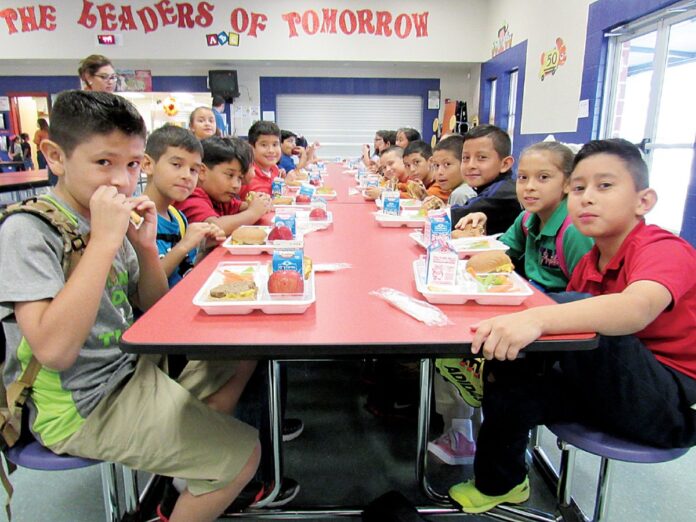WESLACO — The school district’s new supper program has transformed elementary cafeterias into family-style dinner tables.
Weslaco ISD Food Service Director Dora Peña, a registered dietician, said supper is now being provided to the district’s afterschool students thanks to an ACE (Texas Afterschool Centers on Education) grant and funding through the USDA’s Food and Nutrition Service’s At-Risk Child and Adult Care Food Program, or CACFP.
The district will now be reimbursed monthly for as much as $3.16 per meal. The program, which began at the start of the 2016-17 school year, is already feeding hundreds of students from the district’s 11 elementary campuses at 10 sites.
One such site, Justice Raul A. Gonzalez Elementary, provides supper to approximately 110 children per day, according to cafeteria manager Mary Carmona.
Taken into consideration at Gonzalez, however, is the number of afterschool students bussed there from neighboring Rudy Silva Elementary.
“This kind of fills that nutrition gap,” Peña said of the supper program, which serves meals from 4:45 to 5:15 p.m. Monday through Friday. “Some of the children may not have another meal until the following day at breakfast, for example. Especially for children who have to stay at school for a prolonged period of time, such as the students in our afterschool program, we’re noticing that they really are hungry and enjoying the suppers.”
Meals provided include healthy proteins, whole grains, fruits and vegetables as well as dairies. Gonzalez and Silva students on Thursday were served cheeseburgers with celery, carrots and an apple with milk.
“We have a two-week cycle that’s a combination of hot and cold meals that are freshly prepared, like the lunch program,” Peña added, further noting that meals must be eaten at students’ designated schools and leftovers are not permitted to be taken home. “This involves many students at 10 different elementary schools staying after school for educational and enrichment activities, so because they were going to be here, they (administrators) asked the food service department to look at the startup of the supper program.”
Student requirements include their name, ID and age, which are documented in rosters.
With regard to the program’s goals, Peña said ongoing efforts to integrate nutritional meals with educational and enrichment activities remain a priority for the district — one in which officials hope will lead to educating a healthier, more focused student body.
She also indicated that children do not have to be afterschool program students in order to receive the meals.
“If we do have a site open then maybe other children from the community can come and enjoy supper, and maybe other students who live in the neighborhood, as long as they’re under the age of 18,” Peña said. “Of course, our whole intent is to have very well-fed students who are more alert and can successfully benefit from the activities.”
Though reimbursement claims depend on meal participation, several hundred students have already begun taking advantage of the program with more expected as the school year progresses.





